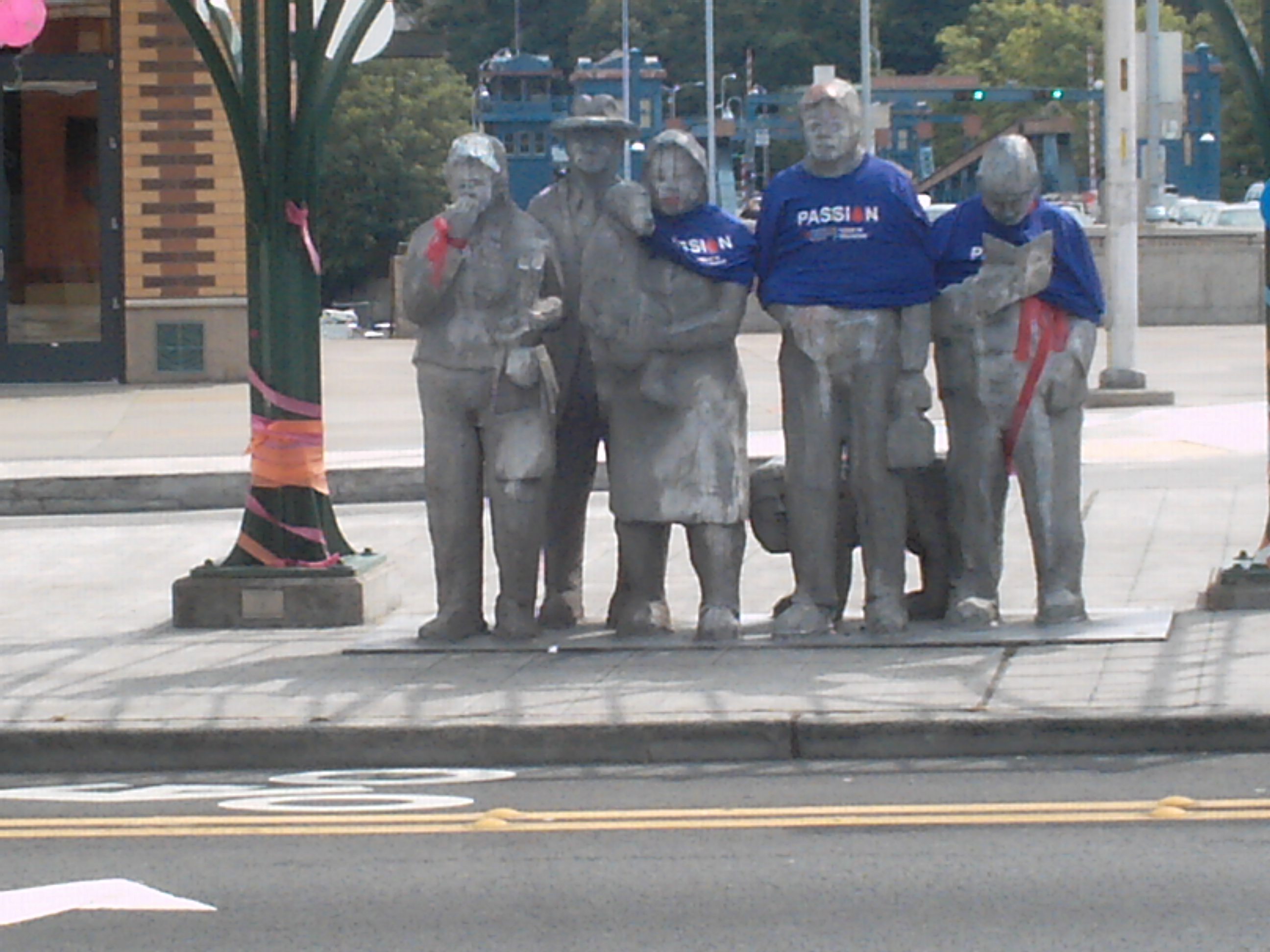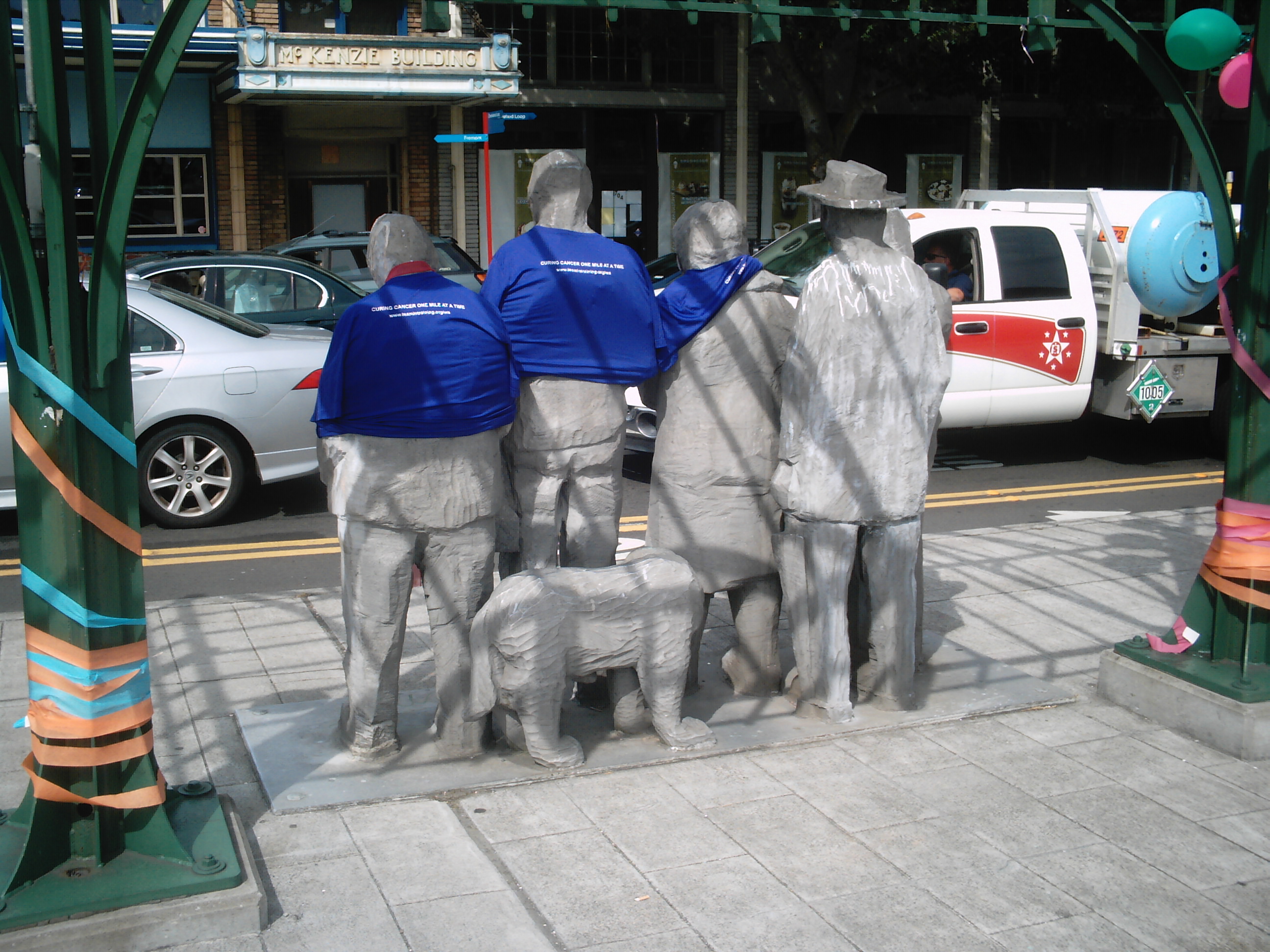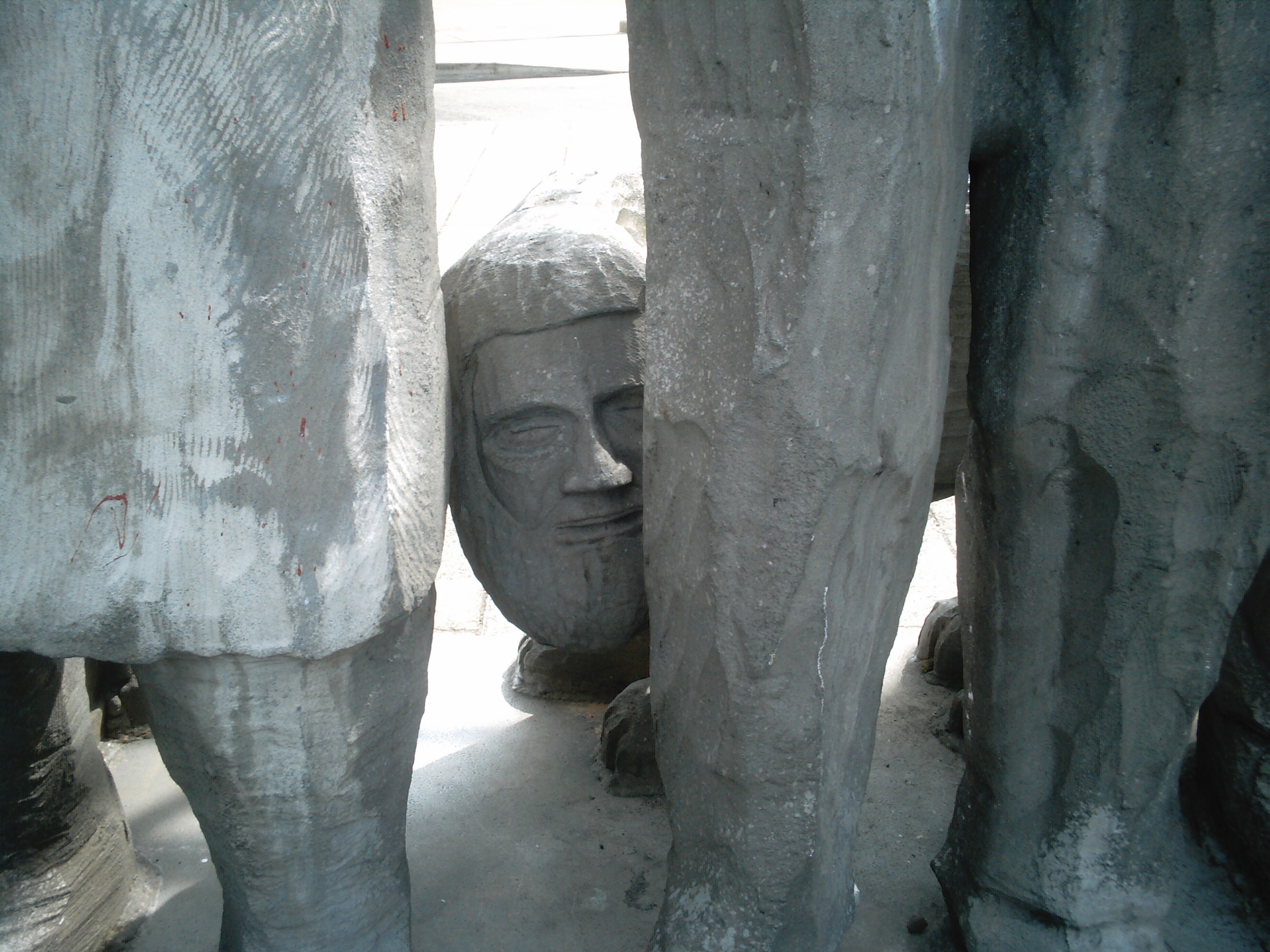In the quirky (to say the least)
Seattle district of Fremont, there are two statues of particular interest. The first is scuptor Richard Beyer’s
“People Waiting on the Interurban.” The statue was dedicated in 1978 to commemorate “the 100th anniversay
of the Fremont District,” (Office) and it depicts several people waiting for the old interurban trolley, which,
at one time, connected Fremont with several outlying cities. (Dressing up the Interurban Sculpture)

The statue, when viewed from a distance, seems relatively normal,
aside from the penchant of the locals who like to dress it up for holidays and other causes, such as cancer awareness. (Dressing
up the Interurban Sculpture)

However, notice the dog.

Now notice the face of the dog. Why would Beyer choose to do that? Was he making some sort
of statement, or was he just being... well... flaky? After all, Beyer was an artist, and artists often do things that
elude everybody but them. But artists also know that their choices will be second-guessed by just about everyone.
And that is true for “People Waiting on the Interurban.”
The
key to deciding if there is some sort of hidden – or not quite so hidden – message here is in determining whose,
if anybody’s, face is on the dog. According to The Art People Love, which “...is a perceptive,
extensively illustrated overview of the work of the artist written by the person who knows him best—his wife, Margaret
Beyer” (Bassetti), the dog represents nobody in particular, but was simply a suggestion by Bruce Crowley, an assistant
of Beyer, and is meant to personify “‘the person who wants a free ride.’” (Lindsay) And that
could be true. But then, it could be a version that Margaret Beyer preferred because it made her husband look less vindictive.
Contrary to Mrs. Beyer’s book, virtually every other source argrees that the face on the dog is that
of Arman Napoleon Stepanian, all the way down to the bushy beard. (Ramirez) One source sees the face of Stepanian on
the dog as a compliment. As the unofficial mayor of Fremont, “Arman’s tireless activism and ‘dogged’
persistence pioneered Seattle’s highly successful recycling program that has now been copied nationwide.” (Dressing
up the Interurban Sculpture) It is speculated this “dogged persistence” inspired Beyer to portray Stepanian
as a dog.
Perhaps the most convincing source would be Richard Beyer himself.
But it is never a good idea to take an artist’s word for anything. After all, if you are uncertain of the meaning
of a poem or a short story or a statue, it is not in the artist’s best interest to tell you the truth. There is
no point in reading a story more than once, if at all, to get the deeper meaning if you already know what that meaning is.
Shirley Jackson is a good example of this. There are at least three interviews where she explains the deeper meaning
in her famous story “The Lottery,”and none of them is the same. So when Richard Beyer contradicts his wife
and credits the dog’s face as that of Stephanian, stating it was ‘sort of mockingly vengeful’" (Ramirez),
we should be wary of taking his word for it. However, in this case, it is more than likely correct.
Beyer,
along with other members of the Fremont Arts Council committee, was tasked with finding a scultor for the project. When
no artists applied, Beyer simply chose himself, a choice which angered fellow committee member Stephanian. The two reportedly
squabbled the entire time the statue was being made, and Beyer got the last word by depicting Stephanain as a dog. (Waiting
for the Interurban)
Stephanian, though, claims that the dog is not him.
However, he even has more of a motive to deny it than Beyer or his wife. “‘Put yourself in my place,’
[Stephanian] says. ‘Do you need this? Would you want to be the face of the pig at the Pike Place Market?’”
(Ramirez)
Work Cited
Bassetti, Fred. “Foreword.” 1999. The Art People Love:
Stories of Richard S. Beyer’s Life and His Scupture. 10 Aug. 2012. http://wsupress.wsu.edu/shop/booksinprint_popup/ArtPeopleLove.html
“Dressing up the Interurban Sculpture.” Fremont
(Seattle): The Center of the Universe. 09 Aug. 2012. http://fremont.com/about/interurban-html/
Lindsay, Kirby. “Another Look
at ‘People Waiting’, and Rich Beyer.” 7 Sept. 2011. The Fremontcentrist. 09 Aug.
2012. http://www.fremocentrist.com/commentary/?p=846
“Office of Arts and Cultural Affairs:
Permanently Sited, #5.” 2011. Seattle.gov. 09 Aug. 2012. http://www.seattle.gov/arts/publicart/permanent.asp?cat=3&item=9&view=2
Ramirez, Mark. “The face of
Fremont. Wily. Inventive. Unrestrained. Showman.” 02 June 2012. The Seattle
Times. 10 Aug. 2012. http://community.seattletimes.nwsource.com/archive/?date=20020602&slug=recycleguy02
“Waiting for the Interurban.”
2012. Roadside America.com. 09 Aug. 2012. http://www.roadsideamerica.com/story/9060